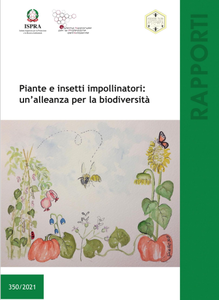Plants and insect pollination: an alliance for biodiversity
The pollination of flowering plants by animals represents an ecosystem service of great value for humanity, both from an economic point of view and for the benefit of spontaneous and cultivated plants.
Over 75% of the main agricultural crops and about 90% of wild flowering plants need bees, wasps, butterflies, ladybugs, spiders, reptiles, birds, mammals and pollinators in general to transfer pollen from a flower to the other and reproduce. Animal pollination, allowing many plants to reproduce, is the fundamental basis for the ecology of species and the functioning of ecosystems, the conservation of habitats and the provision of a wide range of important and vital services and benefits for humans, including the production of food, textile fiber, timber and other products. To conclude: pollination, especially entomophilous pollination, is the basis of biodiversity, our existence and our economies.
The volume examines numerous components of the plant/insect relationship, the management of ecosystems (including urban ones) to improve them, the role of hive products in psychophysical well-being. The annexes illustrate the plant-insect relationship in some Mediterranean herbaceous species (Annex 1) and describe numerous types of honey (Annex 2).
Publication available only online
Scarica la pubblicazione (pdf 9 Mb)

